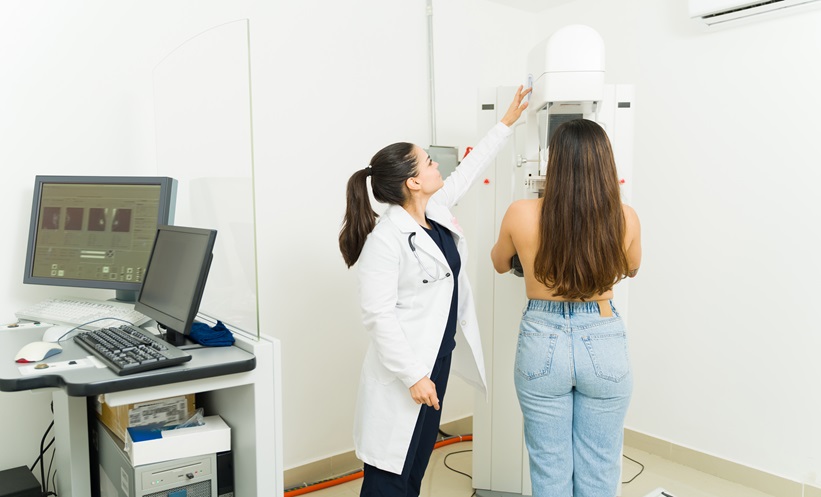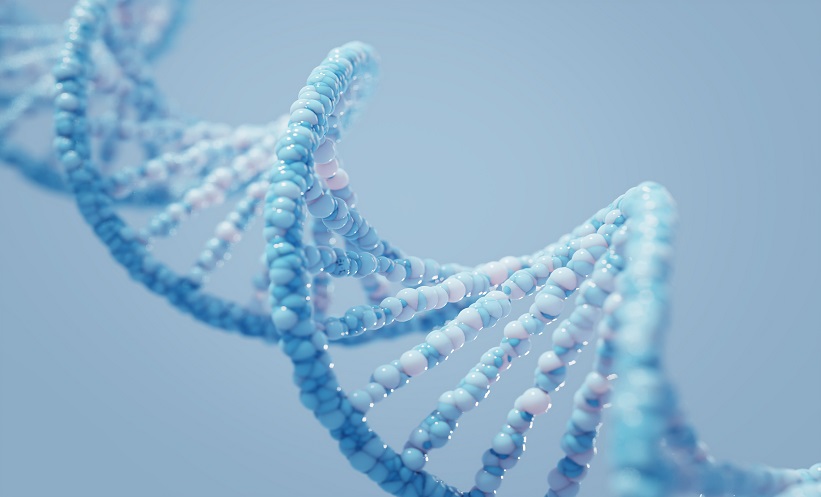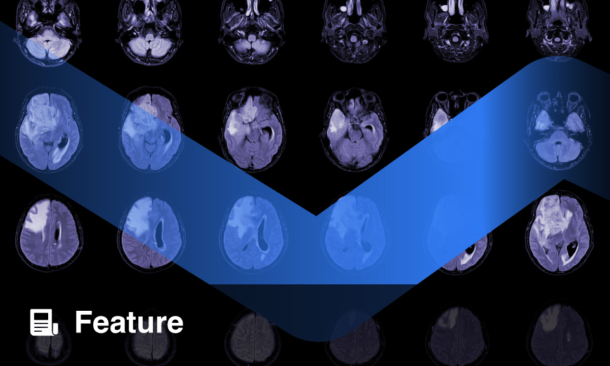Abstract
18F-fluorodeoxyglucose positron emission tomography (FDG-PET) is widely used for cancer staging before treatment and detection of recurrence during post-treatment surveillance. It is increasingly being recognised that tumour FDG uptake values may not only be prognostic, but could have predictive value to assess for treatment response during and after neoadjuvant therapy in oesophageal cancer (OC). This review focusses on the available evidence concerning the prognostic or predictive role of FDG-PET and evaluates the potential value of FDG-PET in guiding treatment decisions in OC. The correlation between pretreatment maximum standardised uptake value (SUVmax) and prognosis has been demonstrated by multiple studies, although the results are inconsistent and sometimes conflicting. With regard to the predictive value for FDG-PET, post-SUVmax after neoadjuvant chemotherapy appears to hold better promise compared to chemoradiotherapy due to the confounding effect of radiation oesophagitis. Since a number of studies have demonstrated that FDG-PET can discriminate responders from non-responders to induction chemotherapy, the predictive value of FDG-PET imaging was evaluated prospectively and the initial results of CALGB 80803 suggested that changing chemotherapy regimen based on FDG-PET response to induction chemotherapy may improve pathologic complete response rate in PET non-responders when an alternative chemotherapy is used. Furthermore, additional research has suggested that FDG-PET response after induction chemotherapy or neoadjuvant chemotherapy may enrich a patient subset who may potentially avoid subsequent surgery after chemoradiotherapy. However, the majority of reports published on FDG-PET in OC are limited to small, retrospective, and single-institutional studies. Therefore, much of the current evidence-to-date is still hypothesis-generating and would require vigorous validation before FDG-PET could become part of routine clinical practice to direct treatment decisions.
INTRODUCTION
Oesophageal cancer (OC) is the 6th leading cause of cancer-related death with >400,000 deaths estimated annually worldwide.1 Oesophagectomy, radiotherapy, and chemotherapy have important roles in the curative treatment of local disease.2 18F-fluorodeoxyglucose positron emission tomography (FDG-PET) is a well-established imaging technique for initial workup and detection of recurrence after treatment in OC.3 Moreover, FDG-PET is now widely used in the treatment response assessment during or after neoadjuvant therapy.3-5 In this article, we review the available evidence concerning the prognostic versus predictive role of FDG-PET in OC and evaluate the potential value of FDG-PET in guiding treatment decisions.
PRETREATMENT POSITRON EMISSION TOMOGRAPHY AND PROGNOSIS
PET is a molecular imaging technique that provides images of physiologic processes. As an analogue of glucose, FDG is metabolised similarly to glucose and accumulates in most tumours in a greater amount than it does in normal tissues.6 Since the quantity of FDG activity is associated with proliferative activity and viable tumour cell number, the most commonly used parameter of FDG uptake is the standardised uptake value (SUV) of the primary tumour.
Multiple studies have been published on the relationship between FDG-PET at time of diagnosis and prognosis in OC. Regarding the prognostic value of baseline SUVmax for patients receiving surgery alone, in a meta-analysis reported by Omloo et al.,7 all eight studies suggested that high SUV is associated with worse survival in univariate analysis; however, whether SUVmax is an independent prognostic factor is unclear.
The prognostic value of baseline PET SUVmax is much more conflicting in OC patients treated with neoadjuvant chemoradiotherapy (CRT) followed by surgery. Xi et al.8 reported that pretreatment SUVmax (≥5.3 versus <5.3) was significantly associated with disease-free survival in patients receiving neoadjuvant CRT. However, another prospective study from France9 indicated that SUVmax did not effectively correlate with pathological response, survival, or recurrence. Similarly, Yap et al.10 also reported that baseline SUVmax had no significant predictive value on survival outcomes in patients treated with trimodality therapy (TMT). However, although the predictive role of pretreatment SUVmax was controversial in patients who received neoadjuvant CRT, it could identify a subgroup of patients who would benefit from therapy. A large series from MD Anderson Cancer Center (MDACC), University of Texas, Houston, Texas, USA, demonstrated that the median overall survival (OS) was similar between CRT alone and TMT in patients with clinical complete response (CR) after CRT and baseline SUVmax <6. In contrast, TMT patients had a significantly better survival rate than patients undergoing CRT alone if baseline SUVmax measured ≥6.11
For patients treated with definitive CRT without surgery, the prognostic value of baseline SUVmax has also been verified in many studies. Suzuki et al.12 reviewed 209 patients who underwent definitive CRT and found that a higher baseline SUVmax (≥12.7) was associated with poorer OS. A more recent study13 from MDACC reported that baseline SUVmax (≥9.7 versus <9.7) was an independent prognostic factor for progression-free survival. Atsumi et al.14 also indicated that a higher SUVmax (≥10.0) was predictive of worse survival and poorer local control in OC patients receiving definitive CRT. In addition to baseline SUVmax of the primary tumour, the predictive value of baseline SUVmax of metastatic lymph nodes has also been investigated. Yap et al.10 found that nodal SUVmax (≥7.0 versus <7.0) was an independent predictor of OS in patients who received definitive CRT, but not in those who received TMT.
Collectively, the prognostic value of pretreatment SUVmax might be influenced by treatment modality in OC patients. It should be noted that there was no uniform cut-off value for SUV and most studies used the median value as the cut-off, or set the cut-off according to receiver operating characteristic curve analysis. Moreover, previous studies have demonstrated that several pretreatment clinicopathologic parameters are associated with low FDG avidity in patients with OC, such as small tumour size and non-signet ring cell carcinoma type, which may also influence the prognostic value of SUVmax.15
POSTNEOADJUVANT TREATMENT POSITRON EMISSION TOMOGRAPHY AND PROGNOSIS
For patients treated with neoadjuvant treatment, the post-treatment PET SUVmax may provide additional prognostic information. In a large-scale study from Japan, FDG-PET was performed before and 2–3 weeks after completion of neoadjuvant chemotherapy in 211 OC patients.16 The post-SUVmax correlated significantly with pathological response and OS. The 5-year OS rate was 62.2% for patients with post-SUVmax <3.5, compared to 35.1% for those with >3.5 (p<0.001). Multivariate analysis further identified that post-SUVmax was an independent prognostic factor for survival in patients who underwent neoadjuvant chemotherapy followed by surgery.
Compared with neoadjuvant chemotherapy, the predictive role of post-neoadjuvant CRT SUVmax was inconclusive, most likely due to the confounding effect of radiation-induced oesophagitis. Investigators from MDACC found that post-SUVmax after neoadjuvant CRT was one of many independent variables to predict pathologic CR in patients with oesophageal adenocarcinoma.17 Accordingly, van Rossum et al.18 also reported that post-SUVmax was significantly associated with pathologic CR in oesophageal adenocarcinoma. However, a recent small study19 from Japan indicated that although post-SUVmax was prognostic in univariate analysis, only pathological nodal staging was an independent prognostic factor in multivariate analysis.
Disappointingly, in a study reported by Piessen et al.,9 no significant association was found between post-SUVmax and pathologic response or survival in patients treated with neoadjuvant CRT. Similarly, Elliott et al.20 reported that post-SUVmax was not correlated with pathologic CR or complete resection, and its sensitivity for pathological nodal staging was only 10%. In a recent prospective cohort study from Ireland, 138 patients were included and PET-CR was defined as post-SUVmax of <4 after neoadjuvant CRT.21 A total of 63 patients (46%) achieved PET-CR, of whom only 17 patients had pathologic CR. The sensitivity, specificity, positive predictive value, and negative predictive value of PET-CR to predict pathologic CR was 57%, 57%, 27%, and 82%, respectively. Therefore, post-SUVmax after neoadjuvant CRT has limited prognostic and discriminatory value for clinical application. However, it should be noted that it is rather difficult to directly compare results from different studies, because different institutions used different PET scanners with different protocols and different reconstruction algorithms.
CHANGE IN 18F-FLUORODEOXYGLUCOSE UPTAKE AND PROGNOSIS
The change in SUVmax after neoadjuvant CRT has been studied as a prognostic factor for survival or pathologic response. Baksh et al.22 reported that the rate of SUV change showed a significant correlation with pathologic response (r=0.178; p=0.017) in 187 patients treated with neoadjuvant CRT prior to surgery. Another small study23 from Korea found that the decrease in SUVmax was a significant predictor for pathologic CR after neoadjuvant CRT in patients with oesophageal squamous cell carcinoma (SCC) and the cut-off value of decrease in FDG uptake was 72.1%. A recent report from Japan also evaluated the predictive value of a decrease in SUVmax in 111 patients with oesophageal SCC.24 This study found that the decrease of SUVmax was significantly correlated with pathologic CR. In addition, the 5-year OS rates were 66.0% for patients with a decrease in SUVmax >70% and 42.2% for those with a decrease in SUVmax ≤70% (p=0.04). In contrast, several studies failed to find a correlation between the decrease in SUVmax and pathologic response or survival outcomes.9,20,25 For example, Arnett et al.25 concluded that change in SUVmax after neoadjuvant CRT was not useful for predicting pathologic response or prognosis. Overall, the prognostic value of the decrease in SUVmax after neoadjuvant CRT has not been definitively established.
On the other hand, the FDG-PET response after induction chemotherapy appears to be a more credible imaging marker for prognosis. In 2001, German investigators evaluated whether the reduction of FDG uptake could predict response early in the course of induction chemotherapy prior to surgery.26 Forty patients with oesophageal adenocarcinoma were included, and they underwent FDG-PET scans at baseline and 14 days after the start of chemotherapy. When applying the cut-off value of 35% reduction of FDG uptake as a criterion for metabolic response, the sensitivity and specificity to predict clinical response was 93% and 95%, respectively. PET responders demonstrated significantly better 2-year OS rate than PET non-responders (60% versus 37%; p=0.04). This study group further prospectively validated the prognostic value of 35% SUV cut-off in 65 patients.27 PET responders showed a high pathologic response rate (44%) with a 3-year OS rate of 70%. In contrast, prognosis was very poor for PET non-responders with a pathologic response rate of 5% (p=0.001) and a 3-year OS rate of 35% (p=0.01). Another retrospective study reported by Port et al.28 also supported that a reduction in SUVmax (≥50%) after induction chemotherapy before surgical resection was significantly associated with improved disease-free survival in OC. These data provided the basis for clinical trials using FDG-PET to guide treatment decisions.
For patients treated with induction chemotherapy prior to neoadjuvant CRT, the value of FDG-PET response after induction chemotherapy was also examined. In a Phase II trial of induction and concurrent CRT with irinotecan and cisplatin followed by surgery, baseline and post-induction chemotherapy FDG-PET scans were performed in 55 patients.29 Using 35% as the cut-off point, PET responders showed a significantly higher rate of pathologic CR rate than non-responders (32% versus 4%; p=0.009). Moreover, PET responders had a remarkably improved progression-free survival. Consistently, van Rossum et al.30 found similar results in oesophageal adenocarcinoma. The SAKK 75/02 trial31 also revealed that the decrease in SUVmax after induction chemotherapy correlated well with pathologic response, with a sensitivity of 68% and a specificity of 52%. However, due to the limited number of patients, differences in survival between PET responders and non-responders failed to reach significance in this study.
Less has been published regarding the prognostic value of FDG-PET response to induction chemotherapy in patients undergoing induction chemotherapy prior to definitive CRT. In a relatively small study reported by Ishihara et al.,32 16 OC patients received FDG-PET scans before and 12–24 days after induction chemotherapy. Using a cut-off value of 55% for SUVmax reduction rate, the 1-year OS rate was 100% for PET responders versus 60% for non-responders. However, the number of patients was too limited to reach a definite conclusion in this study. Investigators from the Memorial Sloan-Kettering Cancer Center (MSKCC) New York City, New York, USA, also investigated the prognostic significance of PET response to induction chemotherapy in 52 patients with oesophageal SCC.33 Using a pre-established cut-off value of a 35% decrease in SUVmax, PET responders indicated significantly more favourable 3-year OS rate than non-responders (64% versus 15%; p=0.004).
In addition to SUVmax, FDG-PET image texture analysis has been investigated as an emerging tool to quantify the SUV heterogeneity, which may provide a useful representation of underlying biologic tumour characteristics.5 These proposed features, such as metabolic tumour volume, tumour longitudinal length, and total lesion glycolysis (TLG), had been assessed in the prediction of treatment response. van Rossum et al.30 evaluated the predictive value of PET parameters before and after induction chemotherapy in 70 patients with oesophageal adenocarcinoma for the early prediction of pathologic response to neoadjuvant CRT. The results showed that the change in TLG was predictive for a poor pathologic response at a threshold of -26%, with 67% sensitivity and 84% specificity. However, Blom et al.34 failed to repeat these results and revealed that TLG and metabolic tumour volume were not significant predictors of pathologic response to neoadjuvant treatment in OC. This discrepancy may be related to the small sample size, different tumour delineation methods, and different image acquisition protocol in these studies.
POSITRON EMISSION THERAPY- DIRECTED TREATMENT DECISION
Since multiple studies have demonstrated that FDG-PET can identify responders and non-responders to induction chemotherapy or neoadjuvant CRT, using FDG-PET imaging to guide treatment decisions has prompted interest in clinical practice. To assess the feasibility of a PET-response-guided treatment algorithm and its potential effect on prognosis, German investigators performed the MUNICON Phase II trial, including 119 patients who underwent 2 weeks of induction chemotherapy (cisplatin, fluorouracil, and leucovorin).35 Using a predefined cut-off value of a 35% decrease in SUVmax, PET responders continued to receive chemotherapy for 12 weeks and then underwent surgery. PET non-responders discontinued chemotherapy and proceeded to immediate surgery. After a median follow-up of 2.3 years, PET responders demonstrated significantly longer event-free survival than non-responders (29.7 versus 14.1 months; p=0.002). In addition, major pathologic response was noted in 58% of responders versus 0% in non-responders. This prospective study confirmed the usefulness of early PET response evaluation.
Since the MUNICON trial indicated the poor prognosis for PET non-responders, the same study group conducted a subsequent MUNICON II trial intended to improve the clinical outcome of non-responders using salvage neoadjuvant CRT followed by surgery.36 For PET non-responders, concurrent cisplatin was delivered during radiotherapy, although it was a part of induction chemotherapy regimen. For 23 non-responders, major pathologic response (<10% residual tumour) was observed in 26% of patients, and 2-year OS rate was estimated to be 42%. No patient could achieve pathologic CR and nearly half of the non-responders had distant recurrences shortly after treatment, suggesting that distant metastases could not be controlled by continuing the same chemotherapy regimen. Therefore, although the major pathologic response rate was increased after salvage CRT, the prognosis of PET non-responders remained rather poor. Overall, these two MUNICON trials revealed that early FDG-PET response to induction chemotherapy may provide valuable information in guiding following treatment modality, such as proceeding directly to surgery or changing chemotherapy regimen in non-responders.
Based on MUNICON trials, several studies have further investigated whether the early FDG-PET response could provide useful information for choosing a chemotherapy regimen to be used during radiation.37-39 The MSKCC group37 retrospectively investigated the impact of changing chemotherapy regimen during radiation in PET non-responders after induction chemotherapy. Among 201 patients, 56% were PET responders (≥35% decrease in SUVmax) and 38 of the 88 PET non-responders changed chemotherapy regimen during radiotherapy. The median progression-free survival for PET non-responders who changed chemotherapy was significantly longer than that of PET non-responders who did not change chemotherapy (17.9 versus 10.0 months; p=0.01). Therefore, to change the chemotherapy regimen in PET non-responders may allow a significant number of patients to achieve a significant response to treatment. Of note, this PET-directed strategy needs a prospective study to confirm its benefit. A Phase II multicentre randomised trial, the Cancer and Leukemia Group B 80803 study, seeks to answer this question.38 Patients with oesophageal adenocarcinoma were randomised to receive 4 weeks of induction carboplatin/paclitaxel or fluorouracil/oxaliplatin/leucovorin (FOLFOX) before FDG-PET reassessment. Based on the predefined cut-off value of a 35% decrease in SUVmax, PET responders continued on the same regimen during neoadjuvant CRT, whereas PET non-responders crossed over to an alternative chemotherapy regimen during CRT. Patients underwent oesophagectomy 6 weeks after CRT. Goodman et al.39 recently reported the initial results of this trial. A total of 257 eligible patients were enrolled, of whom 198 patients completed surgical resection and 22.7% of patients achieved pathologic CR. For PET non-responders who switched to alternative chemotherapy during CRT, the pathologic CR rate was 15.6%. The initial results of this prospective study suggested that changing chemotherapy regimen did improve pathologic CR rate in PET non-responders.
Another important issue in OC is whether FDG-PET response could identify patients who will safely avoid subsequent surgery after CRT. However, the published reports regarding this issue have been limited to retrospective and single-institutional studies.40-43 Monjazeb et al.40 studied 105 OC patients receiving CRT with or without resection, of whom 31% achieved a PET-CR after CRT (SUVmax ≤3). Overall, the survival of TMT patients was superior to that of CRT alone. However, despite poorer baseline characteristics, patients who achieved PET-CR after definitive CRT had excellent survival outcomes equivalent to that of patients undergoing TMT. Investigators from MDACC recently published a similar analysis in 220 patients with oesophageal adenocarcinoma.41 Different from the previous study, all patients received induction chemotherapy before CRT with or without subsequent surgery. PET-CR was defined as SUVmax ≤3.0 after induction chemotherapy and 48 patients (21.8%) achieved a PET-CR in this cohort. PET-CR could predict pathologic response (p=0.003) but not survival for TMT patients, whereas PET-CR was significantly correlated with OS in patients treated with CRT alone. More importantly, PET responders treated with CRT alone had comparable OS and progression-free survival as did TMT patients. Therefore, oesophageal preservation strategies could be considered for this subset of patients. In contrast, TMT patients had significantly better survival than patients receiving CRT alone among PET non-responders.
Murthy et al.42 evaluated whether post-CRT SUVmax could define the clinical outcome in OC patients. This study included 272 patients, of whom 117 underwent CRT alone and 155 underwent TMT. If the post-SUVmax was <4.6, survival outcomes were comparable regardless of whether patients received subsequent surgery. On the contrary, if the post-SUVmax was ≥4.6, patients who underwent surgery had significantly more favourable survival than patients receiving CRT alone.43 Although these aforementioned studies showed promising results, whether using PET response is sufficient to recommend against subsequent oesophagectomy after CRT remains a question that should be validated in prospective trials.
CONCLUSION
Published data demonstrate that FDG-PET has prognostic value before, during, and after neoadjuvant treatment in OC, although the results are heterogeneous. Early decrease in FDG uptake after induction chemotherapy appears to be a promising imaging marker for prognosis. Although limited data are available, FDG-PET may guide treatment decisions by identifying non-responders to induction therapy. However, the majority of reports published on FDG-PET in OC are limited to small, retrospective, and single-institution studies. Therefore, more research focussing on standardisation of protocols and inter-institutional technique differences should be performed.
On the basis of current evidence, FDG-PET should not yet be used in routine clinical practice to direct treatment decisions. More prospective multicentre trials are encouraged to further explore the role of FDG-PET.







